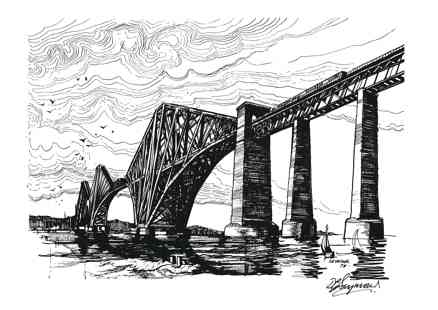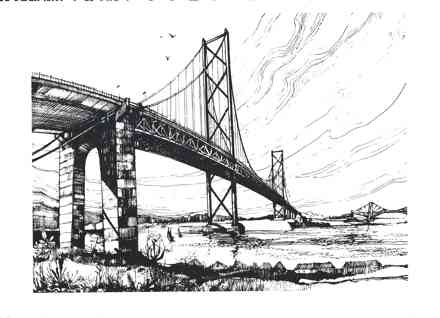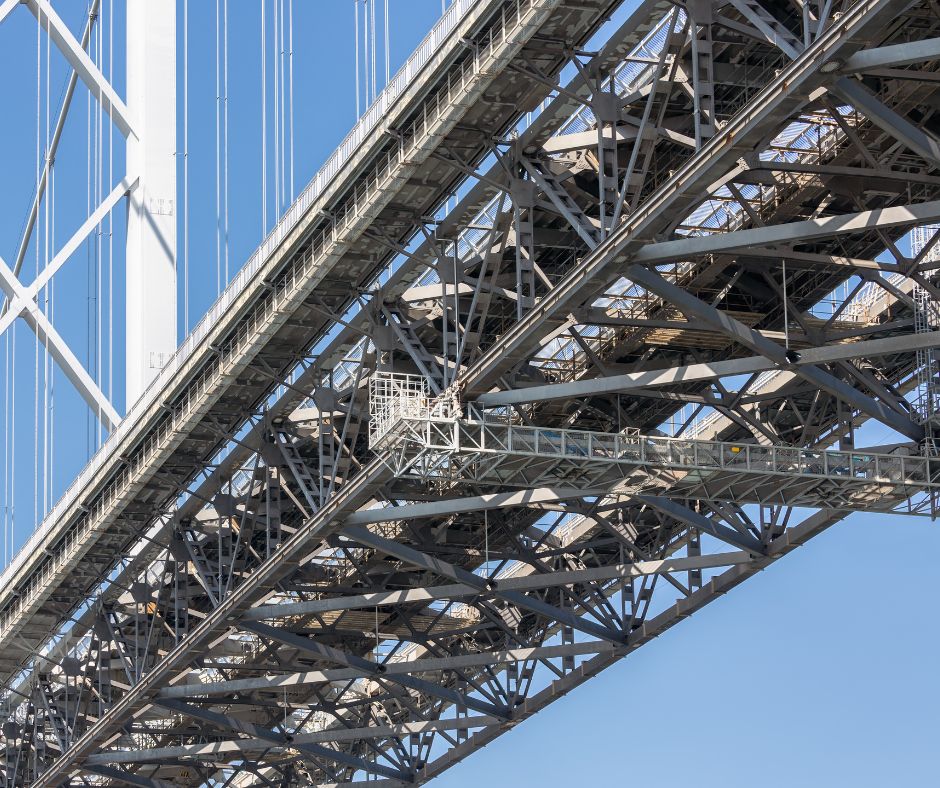- 07843 132124
- info@derekgillseymour.art
- Response within 24hrs
About
the forth rail bridge
The Forth Rail bridge was designed by Sir Benjamin and Sir John Fowler in 1882 and opened on Tuesday 4th March 1890 by Albert Edward, Prince of Wales.
Forth Bridge is only open to trains, there is no pedestrian or cycle access it’s designed to carry the Edinburgh and Aberdeen line across the Forth and is still being used as a passenger and freight rail bridge today for more than 200 trains each day (more than 3 million passengers each year).
Over the 8 years, 64,000 people were employed to build the 1.5 mile (2,529m) bridge which sadly resulted in the death of 71 people. The Forth Bridge has been granted UNESCO World Heritage Site status and is the 6th Scottish landmark to be awarded.

53,000 tonnes of steel were used in the creation of the Forth Rail Bridge and more than 6.5 million rivets.
COSTING
£
0
OVER YEARS
0
pEOPLE
0
OF 'FORTH PAINT'
0
L
About
the forth road bridge
The Forth Road Bridge began construction in September 1958 by Freeman Fox & Partners and Messrs Mott, with Hay & Anderson overseeing the design of the suspension bridge. The bridge was built for pedestrians, cyclists and public transport to cross the Forth between South Queensferry, now part of Edinburgh and North Queensferry in Fife. The bridge was opened by Her Majesty The Queen and the Duke of Edinburgh on September 4, 1964. The Forth Road Bridge is still used for the same purpose today and was designated a Category A listed structure in March 2001.

The Forth Rail bridge was designed by Sir Benjamin and Sir John Fowler in 1882 and opened on Tuesday 4th March 1890 by Albert Edward, Prince of Wales.
Forth Bridge is only open to trains, there is no pedestrian or cycle access it’s designed to carry the Edinburgh and Aberdeen line across the Forth and is still being used as a passenger and freight rail bridge today for more than 200 trains each day (more than 3 million passengers each year).
Over the 8 years, 64,000 people were employed to build the 1.5 mile (2,529m) bridge which sadly resulted in the death of 71 people. The Forth Bridge has been granted UNESCO World Heritage Site status and is the 6th Scottish landmark to be awarded this status.
COSTING
£
0
OVER YEARS
0
pEOPLE
0
gALLONS
0
L
About
the forth road bridge
The Forth Road Bridge began construction in construction which began in September 1958 and was opened by The Queen and the Duke of Edinburgh on 4 September 1964.
Freeman Fox & Partners and Messrs Mott, Hay & Anderson oversaw the design of the suspension bridge.
The bridge was built for pedestrians, cyclists and public transport to cross the Forth between South Queensferry, now part of Edinburgh and North Queensferry in Fife. The Forth rail bridge is still used for the same purpose today.
Construction facts:
The Forth Road Bridge has a span of 1,006 metres between the two towers.
It was the fourth longest in the world and the longest outside the US when it opened on 4 September 1964.
39,000 tonnes of steel and 125,000 cubic metres of concrete were used in building the 1 ½ miles bridge.


Painting the bridge
63,000 gallons and is painted continuously.
About the Queensferry Crossing
The Queensferry Crossing is part of the M90 and is open only to motorway traffic.
The Queensferry Crossing opened to traffic on 30 August 2017.
The 1.7 miles (2.7km) structure is the longest 3-tower, cable-stayed bridge in the world. It is also by far the largest to feature cables which cross mid-span.
This innovative design provides extra strength and stiffness, allowing the towers and the deck to be more slender and elegant.
The new crossing formed the centrepiece of a major upgrade to the cross-Forth transport corridor in the east of Scotland, representing a total Scottish Government investment of over £1.3 billion.
In total, the overall Forth Replacement Crossing scheme is 13.7 miles (22km) long, including major motorway upgrades to the north and south of the bridge and also the first-ever use in Scotland of variable mandatory speed limits to smooth traffic congestion via Intelligent Transport System. This also controls dedicated bus lanes within the motorway’s hard shoulders – another first in Scotland.
The Queensferry Crossing boasts some impressive facts and figures.
- The structure spans 1.7 miles (2.7km) making it the longest three-tower, cable-stayed bridge in the world.
- The biggest infrastructure project in Scotland for a generation.
- New world record in 2013 when we achieved the largest continuous underwater concrete pour. The 24-hour non-stop operation successfully poured 16,869 cubic metres of concrete into the water-filled south tower caisson.
- Prior to the completion of the final closure sections on the deck, the balanced cantilevers which extend 322m north and south from the central tower, i.e. 644m tip to tip, were recorded by Guinness as the longest ever.
- Highest bridge towers in the UK. (210m)
- The longest free-standing balanced cantilever in the world. (Centre Tower deck fan was 644m wide prior to being connected to the rest of the structure)
